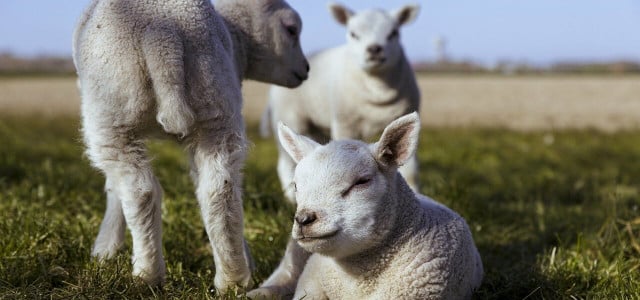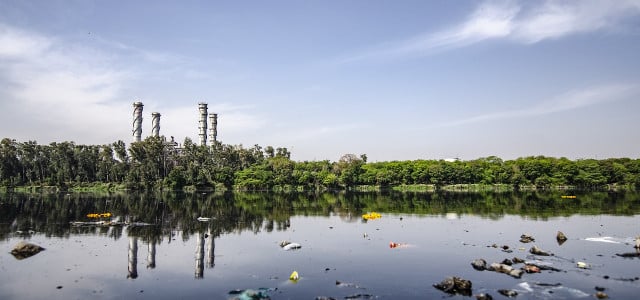Do you eat any of the worst foods for the environment? Discover the impact of these environmental culprits and find sustainable alternatives.
Deforestation, water shortages and pollution aren’t just abstract buzzwords — they’re the stark reality of the negative environmental side effects tied directly to our food production. Some of the worst foods for the environment contribute significantly to these devastating effects.
Remarkably, food production is the culprit behind a staggering 30% of greenhouse gas emissions worldwide. This means that our meal choices aren’t just about personal health and flavor preferences, but they’re also instrumental in determining the health of our planet.
By opting to eat with the environment in mind, we as individuals can make meaningful strides in reducing our carbon footprint. Eating organic, seasonal and local produce emerges as a fantastic way to commence a journey towards more sustainable consumption.
Not Just Meat: Other Foods Impacting Our Planet

(Foto: CC0 Public Domain / pexels - Elina Fairytale)
While many of us are familiar with the debates surrounding meat’s environmental impact, it’s essential to understand that the spectrum of food-related environmental concerns is much broader. From high greenhouse gas-emitting foods to those causing other detrimental ecological repercussions, there’s a lot to consider.
While reducing meat and dairy intake is pivotal, there are other foods silently exerting immense pressure on our environment.
Let’s dive into an enlightening exploration of the six worst foods for the environment, some of which might just surprise you.
The #1 Worst Food for the Environment: Beef
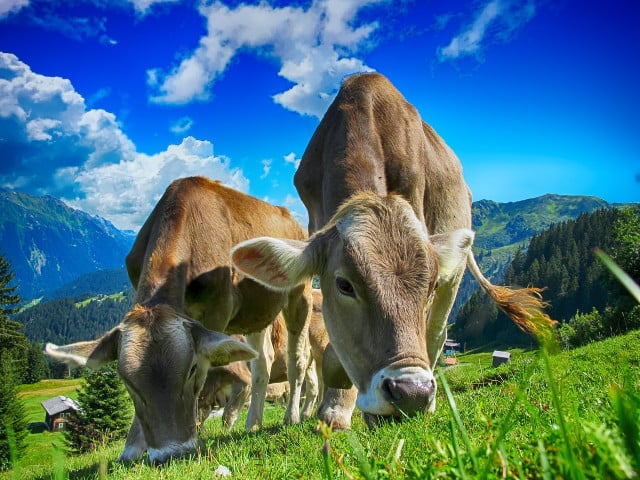


(Foto: CC0 / Pixabay / TheDigitalArtist)
The sizzle of a steak on the grill might be an American favorite, but have you ever considered its eco-footprint? Stunningly, the average American consumes a whopping 59 pounds of beef every year. This love affair with beef doesn’t just affect on our health but weighs heavily on the planet too.
According to the UN Food and Agriculture Organization, beef and dairy cattle contribute to a massive 65% of the livestock sector’s greenhouse gas emissions. To paint a clearer picture: for every kilogram of beef produced, there’s a release of 99.48 kilograms of greenhouse gases. One of the worst foods for the environment, beef production is especially notorious because cows emit methane — a greenhouse gas with an impact 34 times more potent than CO2 over a century.
So, what can eco-conscious consumers do? For starters, the world of vegetarian protein beckons! Reports from the World Resources Institute highlight that beef guzzles 20 times more land and releases 20 times more greenhouse gas emissions per gram of edible meat than plant-based diet champions like beans. Embracing a vegetarian or vegan lifestyle is more than just a dietary choice; it’s a powerful step towards shrinking our individual carbon footprints.
If the idea of bidding farewell to meat sounds too daunting, you can still make planet-friendly choices. This is where flexitarianism can come in. Opt for locally-sourced, organic meat and keep an eye out for labels like “Certified Humane” or “Animal Welfare Approved.” These certifications ensure that while you’re savoring your meal, you’re also supporting ethical and sustainable practices.
For a closer look at why meat is so bad for the environment, read Factory Farming: A Look at This Problematic System.
2. Lamb and Mutton: A Hefty Environmental Price Tag
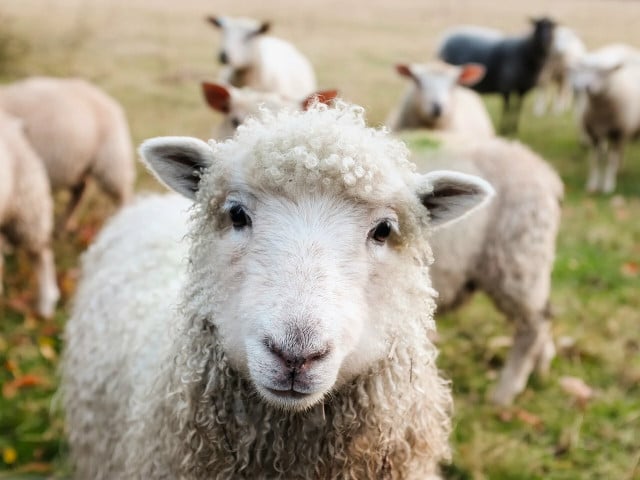


(Foto: CC0 / Pixabay / 12019)
When it comes to our plates, the environmental impact of our choices often goes unnoticed. While beef frequently grabs headlines for its ecological footprint, lamb and mutton are also major contenders in the list of the worst foods for the environment.
For every kilogram of lamb or mutton that graces our dinner tables, an astounding 39.72 kilograms of greenhouse gases are released into the atmosphere, ranking them amongst the top emitters in the animal kingdom.
Water usage is another alarming concern. Producing just a kilogram of lamb meat requires an astonishing 10,412 litres of water. While this might be slightly less than beef’s 15,415 litres, it’s still a monumental volume, especially in our age of escalating water scarcity.
Beyond water consumption, lamb agriculture casts a shadow through other environmental challenges: the pollution stemming from fertilizers and pesticides, the ramifications of expansive grazing, land clearance and the vast distances covered in transportation.
Reimagining our diets can make a world of difference. By curbing our meat consumption, we not only contribute to a healthier planet but also to our personal well-being. The benefits of going vegetarian, even partially, encompass everything from environmental salvation to personal health. It’s an invitation to dine with both our health and the planet’s in mind.
3. Palm Oil: The Hidden Cost of a Common Ingredient
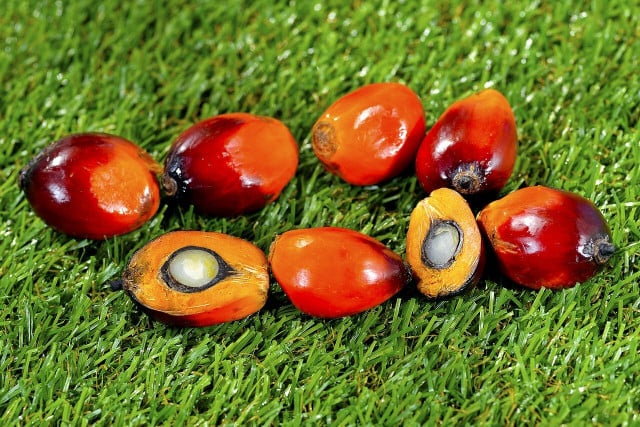


(Foto: CC0 / Pixabay / tristantan)
Deep in the heart of African landscapes, the oil palm tree flourishes, yielding a fruit that has quietly made its way into an array of products lining our shelves.
Palm oil, derived from this fruit, has earned the dubious distinction of being the world’s most produced, consumed, and traded vegetable oil as highlighted by the WWF. In the US alone, Friends of the Earth sheds light on a staggering fact: half of our everyday food items are palm oil products, with an annual import of around one million metric tons.
But beneath this ubiquitous presence lies a tale of ecological distress. The journey of palm oil from tree to table is marred by profound environmental repercussions:
-
Deforestation on an Industrial Scale: Prime rainforests, especially in hotspots like Indonesia and Malaysia, are being decimated to pave the way for expansive palm oil plantations.
-
Biodiversity Crisis: The unbridled expansion of these oil plantations spells doom for the local ecosystems and is a major threat to biodiversity. Iconic species like tigers and orangutans find themselves on the brink as their habitats are obliterated.
-
Erosion and Pollution: The land, once rich and vibrant, faces dire soil erosion. Moreover, the trifecta of soil, water and air pollution rears its head due to the practices associated with palm oil cultivation.
-
Elevated Greenhouse Gas Emissions: Both deforestation and the very process of palm oil production contribute to a significant release of greenhouse gases, further exacerbating the climate crisis.
Recognizing the intricacies of palm oil’s impact offers a chance for informed consumption, allowing us to make choices that respect both our needs and the planet’s.
Learn more: Is Palm Oil Sustainable? Deforestation & Environmental Impact
4. Worst Foods for the Environment: Cheese
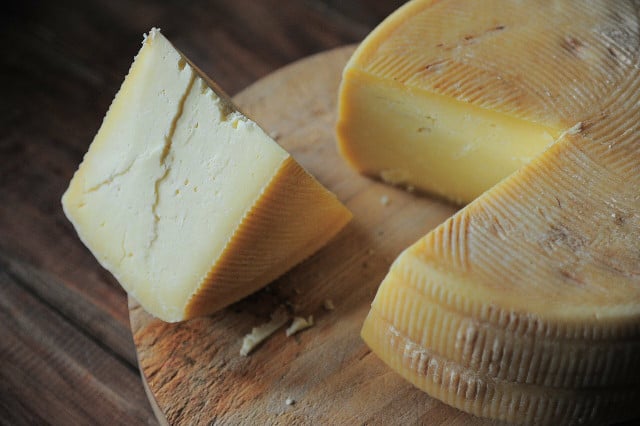


(Foto: CC0 / Pixabay / AlexKlen)
As we indulge in gooey pizzas and creamy pasta dishes, few of us ponder the environmental implications of our beloved cheese. Shockingly, US dairy consumption has surged by 19% over the past decade, casting a shadow on our environmental goals. Cheese, with its rich textures and flavors, unfortunately, ranks among the worst foods for the environment. Here’s why:
-
The Methane Factor: Cheese owes its existence to cows, and these gentle giants are significant methane producers — a potent greenhouse gas that exacerbates global warming.
-
High Inputs, Low Outputs: It takes a significant volume of milk to yield a modest amount of cheese. To put it into perspective, every kilogram of cheese crafted sends 23.88 kilograms of greenhouse gases into our atmosphere. These 2021 stats position cheese as the fifth most significant contributor to food-related greenhouse gas emissions.
-
The Broader Environmental Toll: Beyond emissions, dairy production, in general, has its fingers in multiple environmental pies. Land conversion for grazing, substantial water usage and related environmental strains are all part and parcel of our dairy obsession.
But here’s the silver lining: not all cheeses are created equal. Lighter variants like cottage cheese have a softer environmental touch due to their lower milk requirements. Better still, for those willing to pivot towards more eco-friendly alternatives, dairy-free cheeses offer a promise.
Try satiating your cheese cravings with one of these delicious vegan cheese options:
- Easy Vegan Cheese Sauce Recipe
- The Best Homemade Vegan Cheese Substitutes
- Cashew Cream Cheese: A Vegan Alternative
5. Sugarcane Production: The Bittersweet Environmental Toll
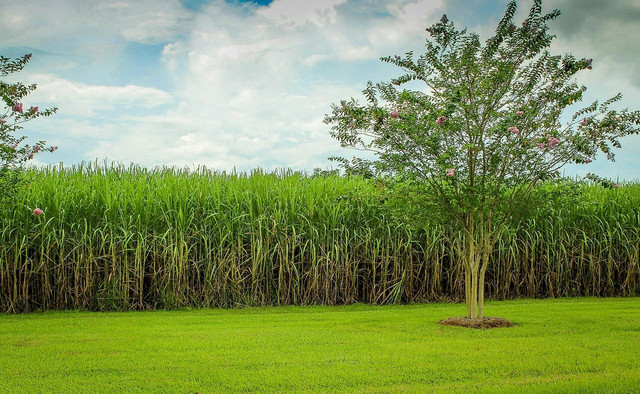


(Foto: CC0 / Pixabay / JamesDeMers)
That spoonful of sugar in our morning coffee might seem innocent, but the backstory of sugarcane, its primary source, is much more complex. A revealing study by the WWF places sugarcane firmly among the planet’s most detrimental crops, especially when considering its role in rampant soil erosion.
Across the globe, a vast expanse — 65 million acres, to be exact — is dedicated to sugarcane cultivation. Transforming these regions for sugarcane has had profound environmental repercussions:
-
Water Woes: Sugarcane thirsts for water. Astonishingly, to produce just one pound of refined sugar, we tap into 213 gallons of precious H2O.
-
Land Degradation: Converting land for sugarcane not only leads to significant soil erosion but also ushers in a slew of environmental afflictions. Water pollution, heaps of industrial waste, and the alarming specter of deforestation all find their roots in sugarcane production.
-
Spotlight on the Everglades: The Florida Everglades paints a stark picture of the environmental toll. This pristine wetland, once teeming with life, faces existential threats from years of sugarcane-induced fertilizer runoff. The very fabric of this ecosystem has been altered, with water pollution wreaking havoc and turning lush marshlands into deteriorating landscapes. Thankfully, interventions like the Comprehensive Everglades Restoration Plan are in motion, signaling hope for this fragile ecosystem’s recovery.
Check out these cane and beet sugar substitutes for some extra sweetness without the eco-anxiety.
6. Worst Foods for the Environment: Coffee



(Foto: CC0 / Pixabay / Christoph)
For many of us, that morning cup of coffee is an essential ritual. In fact, the National Coffee Association points out that a substantial 63% of Americans indulge in this caffeine fix daily. However, as with many modern conveniences, there’s an environmental cost lurking beneath the surface. Furthermore, climate change is set to make coffee exceedingly hard to come by.
Here’s the bitter truth about our coffee obsession:
-
Shift in Farming Methods: The skyrocketing demand for coffee has nudged farmers away from age-old sustainable farming practices. The shift towards ‘sun-grown coffee’ has inadvertently become a harbinger of deforestation and dwindling biodiversity.
-
Biodiverse Breeding Grounds: The lands coffee calls home are unique. Nestled in ecologically sensitive tropical and subtropical regions, these areas are biodiversity hotspots. Displacing these ecosystems means not just losing plants, but the intricate web of wildlife that thrives there.
-
Processing Woes: The impact doesn’t stop at cultivation. Coffee processing plants are often less than kind to the environment, discharging waste directly into rivers and disturbing local aquatic life.
-
A Thirsty Crop: A surprising revelation from a 2003 UNESCO study unveils that a single cup of coffee demands an astonishing 140 liters of water, predominantly utilized in cultivation.
However, it’s not all doom and gloom. There are plenty of coffee substitutes available, and conscious choices can pave the way for a more sustainable coffee experience:
- Fair-Trade First: When reaching for that bag of coffee beans, look for the fair-trade coffee label. This ensures that your brew aligns with a set of ethical and environmental standards. To further aid in making informed choices, check out our list of the best fair-trade coffee brands.
Read more:
- 5 Reasons Why You Should Never Eat Tilapia
- What Does Veganism Mean and Is the Diet for You?
- Consumerism: 12 Examples and How They Affect Life on Earth
- Are Any of Our Climate Targets Still Achievable?
Do you like this post?






